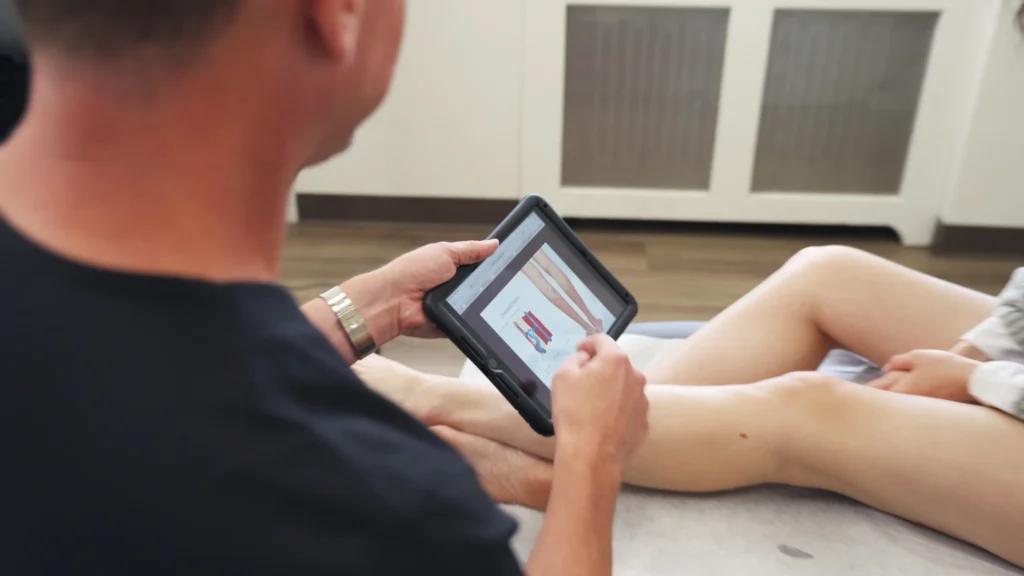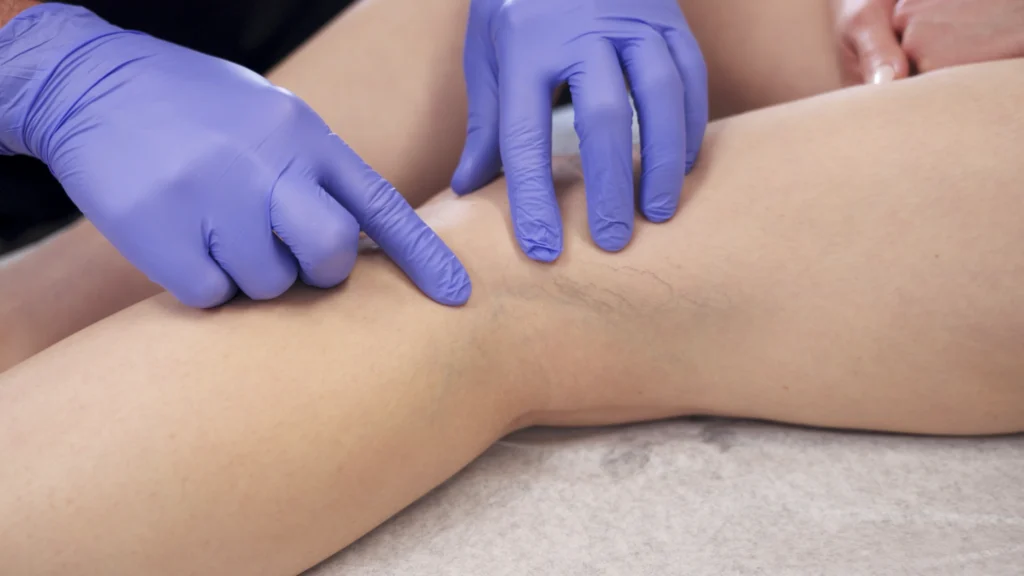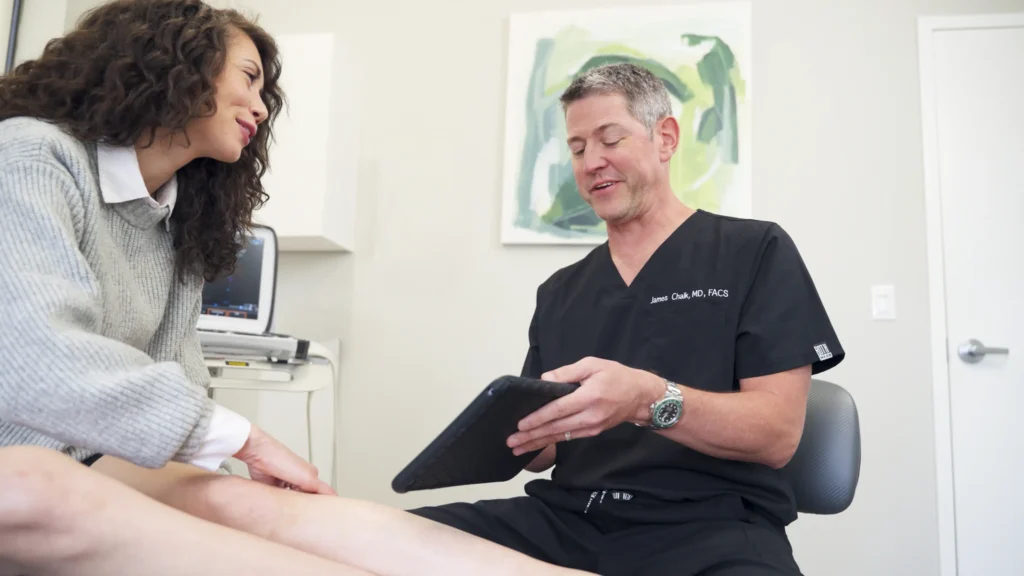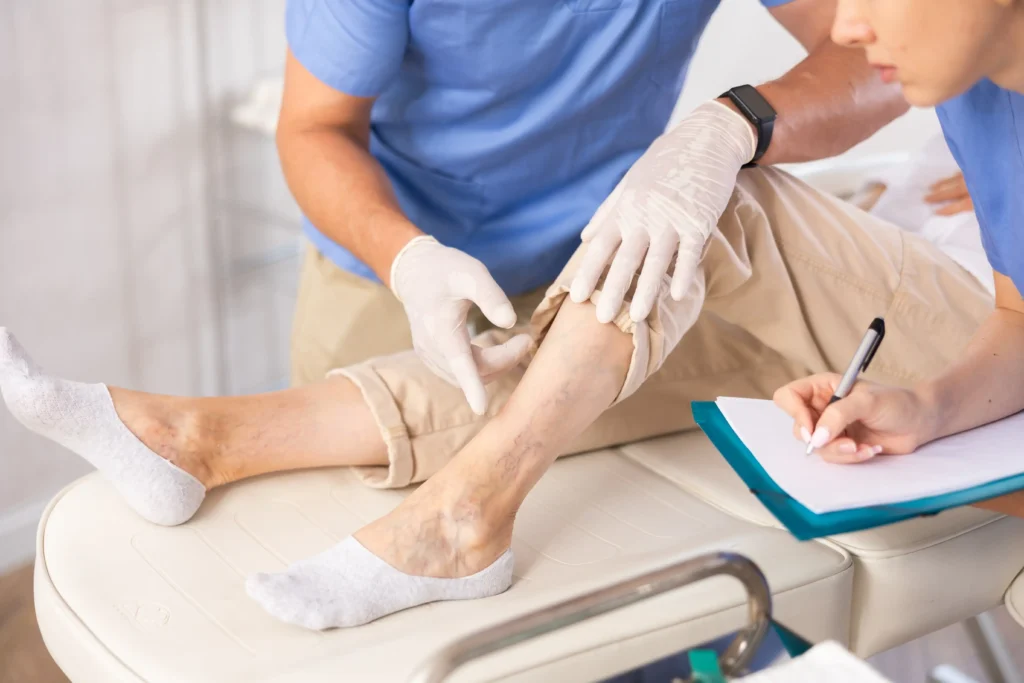How to Treat Varicose Veins? 5 Minimally Invasive Treatments
If you’re noticing visible, bulging veins on your legs or experiencing aching and discomfort after long periods of standing, you may be dealing with varicose vein pain. For many, these veins can cause self-consciousness, especially during warmer months when shorts and dresses are popular choices. But it’s more than just an aesthetic issue—varicose veins can indicate underlying venous insufficiency, a condition that impacts your overall vascular health.
At Vein Treatment, we specialize in diagnosing and addressing varicose veins using the latest minimally invasive varicose vein treatments. Our board-certified vein doctors focus on finding the root cause of vein issues to create a personalized treatment plan tailored to your needs. With vein treatment clinics located in New York, Long Island, California, Maryland, and New Jersey, you have access to advanced care in convenient locations.
Radiofrequency Ablation (RFA)
Radiofrequency ablation (RFA) is a cutting-edge treatment specifically meant to address the root cause of varicose veins: venous insufficiency. This minimally invasive procedure uses heat from radiofrequency energy to close off the affected vein, rerouting blood flow to healthier veins.
A vein specialist begins by numbing the treatment area and inserting a small catheter into the affected vein using ultrasound guidance. Radiofrequency energy heats the vein walls, causing them to collapse and eventually be absorbed by the body. The process is quick and requires minimal downtime, allowing most people to return to regular activities within a day. Since RFA directly treats venous insufficiency, it’s effective for symptom relief and cosmetic improvement.
Endovenous Laser Ablation (EVLA)
Endovenous laser ablation (EVLA) is another effective solution for treating venous insufficiency, particularly useful for larger varicose veins. Like RFA, EVLA is a minimally invasive procedure that seals off problematic veins, but it uses laser energy instead of radiofrequency.
During an EVLA procedure, your vein doctor will insert a small laser fiber into the vein using ultrasound guidance. Laser energy targets the vein walls, heating and collapsing them to reroute blood flow to healthy veins. Over time, the treated vein is reabsorbed by the body. Recovery is fast, with most patients experiencing significant symptom relief within a few days. With minimal discomfort, EVLA is considered one of the best treatments for varicose veins.
VenaSeal
VenaSeal is a revolutionary approach to treating venous insufficiency, utilizing a medical adhesive rather than heat or energy. VenaSeal is especially beneficial for patients who want a quick recovery and a gentler treatment.
In this procedure, a vein doctor injects a specialized medical adhesive into the affected vein, which seals it off instantly. Since there’s no need for thermal energy, there’s no risk of nerve damage, making VenaSeal ideal for veins close to nerves. It’s a quick, painless procedure with no need for anesthesia. With VenaSeal, there’s minimal downtime, and patients can often resume normal activities the same day.
ClariVein
ClariVein is a unique, dual-action treatment for venous insufficiency that combines mechanical and chemical mechanisms to close off varicose veins. This technique uses a rotating catheter and a sclerosing agent to treat larger varicose veins quickly and effectively.
During the procedure, your vein specialist will insert a catheter with a rotating tip that agitates the vein wall, which allows the sclerosing solution to be evenly distributed. This leads to immediate closure of the vein without needing thermal energy or large doses of anesthesia. ClariVein has a high success rate and low complication rates, making it a preferred choice for many patients with venous insufficiency.
Ambulatory Phlebectomy
Ambulatory phlebectomy is a minimally invasive treatment primarily for superficial varicose veins rather than underlying venous insufficiency. This procedure involves small incisions through which the vein doctor removes segments of varicose veins just under the skin.
Using tiny punctures, your vein doctor will gently extract the affected vein sections, minimizing the need for stitches and promoting fast healing. This technique is particularly effective for visible varicose veins that may cause discomfort or cosmetic concerns. While ambulatory phlebectomy doesn’t address venous insufficiency directly, it removes unwanted varicose veins from the skin’s surface, making it a suitable complementary treatment to RFA and EVLA.
FAQs
What are the drawbacks of varicose veins surgery?
Varicose vein surgery, or vein stripping, is an invasive procedure with a longer recovery time, higher risk of complications, and potential for scarring. In contrast, minimally invasive treatments like RFA, EVLA, and VenaSeal offer quicker recovery, fewer complications, and superior outcomes. Visit your nearest vein clinics to learn more about safer, effective options.
What is the best treatment for varicose veins?
The best treatment for varicose veins depends on the underlying cause. If you have venous insufficiency, treatments like RFA, EVLA, VenaSeal, and ClariVein directly address the issue. For superficial varicose veins, ambulatory phlebectomy may be more suitable. A consultation with a vein doctor can determine the best approach.
What is the cost of varicose vein treatment?
The varicose veins treatment cost varies depending on the type of treatment, your insurance coverage, and the extent of your condition. At Vein Treatment, we provide free insurance verification before your first appointment to help you understand what treatments are covered. Most medical insurance plans, including Medicare, cover treatments if they’re medically necessary, especially those addressing venous insufficiency.
What is venous insufficiency?
What is venous insufficiency? Venous insufficiency is a condition where the veins in your legs struggle to send blood back to the heart, causing blood to pool and resulting in varicose veins. If untreated, it can lead to symptoms like leg swelling, pain, and fatigue. Vein treatments like RFA, EVLA, VenaSeal, and ClariVein target venous insufficiency by sealing off the problematic veins and rerouting blood flow.
How to remove spider veins?
How to remove spider veins? Spider veins, though similar to varicose veins, are usually treated with sclerotherapy, a procedure where a special solution is injected to close off the veins. While insurance typically considers spider veins cosmetic, they may cover treatment if you’re diagnosed with venous insufficiency, as sclerotherapy can be included as a part of a more comprehensive vein treatment plan.
Contact Us to Find the Right Vein Treatment
Choosing the right vein treatment starts with understanding your unique needs and the root cause of your symptoms. At Vein Treatment, our board-certified vein specialists offer a range of minimally invasive varicose vein treatments to address both venous insufficiency and superficial varicose veins. With locations across New York, Long Island, California, Maryland, and New Jersey, finding effective vein treatments has never been more convenient. Contact us to schedule a consultation today and explore your vein treatment options.








